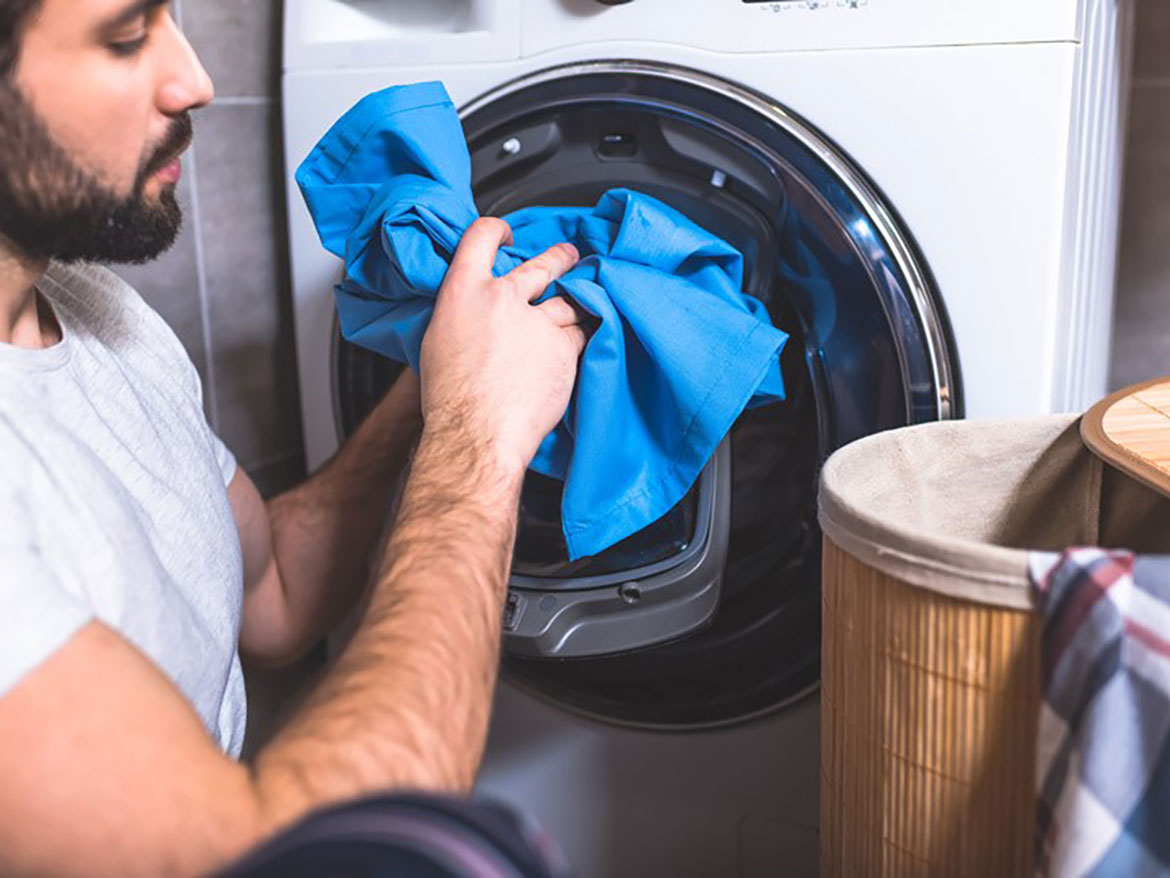FR clothing must be properly washed and sanitized to be effective

Photo credit: PK Safety
Flame resistant clothing is an essential piece of safety gear, but these items get dirty just like any other piece of clothing. Washing and sanitizing FR clothing isn’t the same as doing a load of laundry at home. These items must be handled and treated properly or they may not protect workers from injury in the event of a fire. Anyone using this gear should learn how to correctly wash and sanitize FR clothing to ensure a long working life.
Follow the manufacturer’s guidelines
Workers and safety managers must adhere to the manufacturer’s guidelines when laundering and sanitizing FR clothing. The company that made the workwear should provide information on how to remove dirt, strong odors, and stains without damaging the clothing’s FR properties. Managers should check the tag on the fabric before putting these clothes in the wash. They can also visit the manufacturer or retailer’s website for more information.
If they can’t access this information or the manufacturer doesn’t provide instructions, workers and managers should adhere to the following recommendations:
Choosing a machine
Most FR clothing may be laundered in an industrial washer and dryer or those often found in the home. Both kinds of machines will remove dirt and stains, but industrial machines tend to be better at removing large amounts of soot and dirt. If the fabric is overly dirty, it’s best to use an industrial-grade machine. All that extra dirt and soot may permanently damage or clog a consumer washer and dryer.
It’s best to launder these items in the same place regularly. This makes it easy to monitor and regulate the sanitization process. Asking workers to wash and sanitize their FR workwear at home may lead to a reduction in workplace safety. Some individual workers may not have the proper equipment to wash this clothing at home, while others may forget to adhere to the proper washing guidelines.
FR clothing should only be washed with other FR clothing. Workers and managers should avoid putting non-FR items in the same load or machine as safety workwear.
No bleach, fabric softeners, or starch
Workers and managers should avoid using bleach and other kinds of additives including fabric softeners and starch when washing FR clothing. Bleach can compromise the FR properties of certain fabrics and materials over time. These products aren’t necessary when laundering FR clothing. If any piece of clothing has been exposed to bleach it should be removed from service immediately.
Fabric softeners and some starch contain flammable particles that may ignite in the workplace. If these products were used on the FR clothing, run the clothing through the wash again to remove the additives. The same is also true of certain types of dryer sheets, including anti-static or wrinkle-free sheets.
Avoid insect repellant
Workers should never spray their FR clothing with insect repellant, especially if these items contain DEET, or diethyltoluamide, which is the active ingredient in most repellants. DEET is considered highly flammable and may ignite if exposed to a fire hazard.
Insect repellent is best used directly on the skin. There are non-DEET containing insect repellants, and these would be preferable to use in contact with FR clothing. In any event, workers should apply this product before putting on their FR clothing to reduce the chances of ignition.
Inspect and remove damaged items
It’s always important to inspect FR clothing after putting it in the wash. Workers and safety managers should watch out for discoloration, weak fabric, tears, rips, holes, and other signs that the fabric may be damaged. These items should either be repaired or removed from service.
If a piece of clothing has a stain that doesn’t come out in the wash, the manager will have to decide how to best handle the situation. If the substance that caused the stain contains flammable properties or ingredients, the clothing should be removed from service. However, this may not be necessary if the stain was caused by a food or beverage product, such as ketchup, barbeque sauce, or juice.
Workers should avoid eating and drinking while wearing their safety gear or FR clothing to prevent stains. They should also use extreme caution when handling flammable products in the field, such as oils, solvents, and chemical cleaning agents. If these products get on the FR clothing, they may not come out in the wash, which means the clothing should be removed from service.
If the clothing appears ripped or faded, managers and workers can try to repair it by patching the item. It’s important to use the same type of FR fabric and thread when patching holes and tears. Individuals should ask the manufacturer or retailer for additional FR fabric. They can also send it back to the manufacturer and ask them to repair the hole or tear on their behalf. This is often much cheaper than having to replace the item outright.
Workers should have access to FR clothing that fits the exact size and shape of their bodies. If the clothing shrinks in the wash, it may be too tight for the person to wear it in the field. This may leave some parts of their skin exposed, which could put them at risk of injury or death in the event of a fire. If these items no longer fit the person’s body, they should be removed from service and replaced with ones that do.
These recommendations are designed to help workers and safety managers protect themselves from injury in the field. The clothing should be washed regularly to ensure a long working life. FR clothing shouldn’t fall apart after going through the machine. It’s best to buy safety workwear from a reliable retailer or name brand with a long history of keeping workers safe in the field. These items can be washed repeatedly without losing their FR properties.
Managers and workers should refer to this information before putting their FR clothing through the wash.
Looking for a reprint of this article?
From high-res PDFs to custom plaques, order your copy today!





